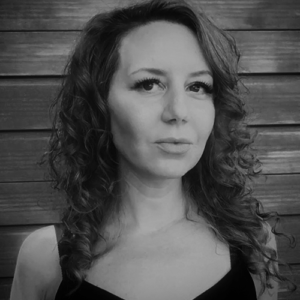
Recent news has highlighted the ongoing gender gap that remains open in the UK music industry. Following the cancellation of all music festivals in 2020 due to the coronavirus, Reading and Leeds announced that the 2021 events would have double the amount of headliners. The disappointment came from noting that none of the six headline acts were women.
The argument that there aren’t women making music on this scale is simply not true. In 2019, Billie Eilish performed to the biggest crowd Reading had ever seen.
Glastonbury festival has only ever seen Beyonce and Adele headline, however the cancelled 2020 line-up was consciously split 50/50 thanks to festival organiser Emily Eavis, who acknowledges just how insidious this problem is across the entire industry. Speaking to the BBC (and highlighted in Stylist) Eavis spoke of her frustration:
“The live music world has been so male-dominated, so I’d go to meetings with just tables of men, and some of them were great, and some just refused to kind of accept they had to deal with me. I think it’s quite hard to go from dealing with my dad and then to suddenly have to be dealing with me.”
Again, this stereotype is simply not true, and is more often than not perpetuated by the fact that women are overlooked, and go uncredited and unnamed for the work that they do. 39% of women in a recent survey cited presumptions that they are unskilled and that they felt sexualised in the workplace as major career impediments.
They do! However, as in so many male-dominated industries, the ‘gatekeepers’ to most opportunities need to open these up to women. In the most recent Gender Disparity Data Report of the period June 2019-2020, the results were overwhelmingly disappointing.
Music in the British Top 100 was broken down and showed that 30% featured men, 19% featured women, 30% featured collaborations. The data also highlighted that just 3% of all music producers in the Top 100 were women.
This is a lazy and biased statement that women are tired of hearing. Despite the conversation being regularly revived during every annual award and festival season, change has been slow, if forthcoming at all. For every opportunity that is consciously opened up to women, there is undoubtedly a flurry of misogynistic comment to follow; the 3% should be grateful and how dare they take positions away from men based on tokenism rather than their abilities.
Speaking of the Gender Disparity Data Report, MU Deputy General Secretary Naiomi Pohl said:
“It is a choice not to record, play or promote music by female artists as the talent is there. Female musicians, songwriters, composers and producers, as well as radio presenters, need to be heard and credited for their work in the same way that men are. The MU is committed to supporting and championing women working in the music industry and we look forward to seeing how radio stations plan to tackle this issue.”
The reality actually has a much more sinister side when you ask the question of what such an imbalance in the workplace feels like for women across the industry. The 2019 report from the Annenberg Inclusion Initiative highlighted personal experiences whereby women in the recording studio had been doubted, questioned, objectified and felt unsafe. Professor Stacy L Smith who created the report “Inclusion in the Recording Studio?” summarised:
“What the experiences of women reveal is that the biggest barrier they face is the way the music industry thinks about women. Until those core beliefs are altered, women will continue to face a roadblock as they navigate their careers.”
In terms of safety, the MU has ran several initiatives and campaigns to address sexual harassment and safety in the workplace. Describing why their ‘Safe Space’ scheme to report sexual harassment, discrimination and bullying was set up, they state:
48% of musicians have been sexually harassed at work.
85% did not report it.
58% have witnessed it.
61% believe freelancers are at higher risk of being sexually harassed while working.
The MU also campaigned to #ProtectFreelancersToo in light of these statistics.
“The music industry has a woman problem…. Despite years of head-scratching over the cause, one reason is hiding in plain sight. Or, perhaps it is intentionally overlooked. New figures from the Musicians’ Union – which represents more than 31,000 artists, from rock musicians to orchestral players – suggests almost half of its members have experienced harassment at work” – Yomi Adegoke
It’s disappointing that in 2020 women are still having to discuss and explain just why there should be fair opportunities to work, why that work should be fairly compensated and acknowledged, and why (at the bare minimum) there should be safe spaces where that work can be undertaken free from assault and harassment.
Women in the UK music industry can find out about the current PRS Keychange initiative and equalities network.
The above questions have regrettably all been read or heard by the author.
UK Live Music Scene Has First Outdoor Gig & Plans To Reopen Venues
Alice Smart: Interview with a London based Costume Constructor


Michelle is a musician and composer from the UK. She has performed across the UK and Europe and is passionate about arts education and opportunities for women and girls.
Read Full Profile© 2021 TheatreArtLife. All rights reserved.

Thank you so much for reading, but you have now reached your free article limit for this month.
Our contributors are currently writing more articles for you to enjoy.
To keep reading, all you have to do is become a subscriber and then you can read unlimited articles anytime.
Your investment will help us continue to ignite connections across the globe in live entertainment and build this community for industry professionals.